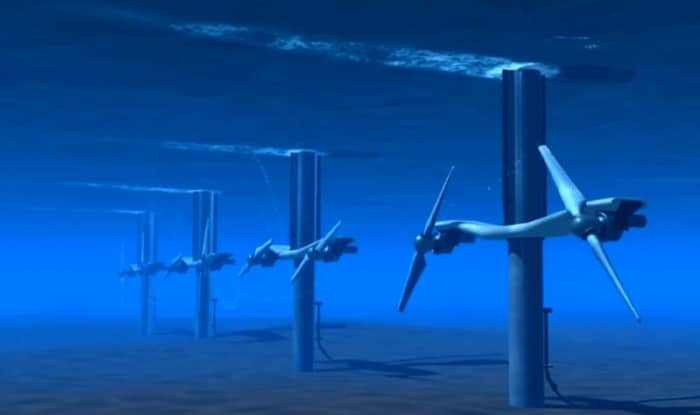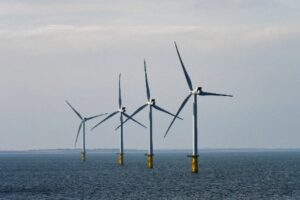Pros and Cons of Tidal Energy

Tidal energy is a form of renewable energy that is generated from the movement of tides. It is a promising source of energy because it is clean, reliable, and abundant. However, like any other source of energy, tidal energy has its pros and cons, which we will explore in this article.
Pros of Tidal Energy
Tidal energy is a promising source of renewable energy that has gained popularity in recent years due to its many advantages. Tidal energy is generated by harnessing the power of ocean tides, which are caused by the gravitational pull of the moon and the sun. The movement of tides can be used to produce electricity, making it a reliable and clean source of energy. Now is time to explore the pros of tidal energy in detail.
1. Renewable and Clean Source of Energy
Tidal energy is a renewable and clean source of energy that does not emit any harmful pollutants or greenhouse gases. Unlike fossil fuels, which contribute to climate change, tidal energy is a sustainable and eco-friendly alternative. The energy produced by tidal turbines is generated by the natural movement of tides, making it a continuously available source of energy.
2. Reliable and Predictable
Tidal energy is a predictable and reliable source of energy, making it a more stable source of energy than other forms of renewable energy such as solar or wind. Tides occur twice a day, and their patterns are predictable, which makes it easier to plan and manage the production of energy. This predictability makes tidal energy a dependable source of energy that can be used to meet the energy demands of households and businesses.
3. Low Operational Cost
Once the infrastructure for tidal energy is in place, the operational costs are relatively low compared to other forms of renewable energy. Tidal turbines require very little maintenance, and the energy produced is consistent, making it easier to plan and manage. Unlike solar or wind energy, tidal energy is not dependent on weather conditions, making it a more reliable and cost-effective option.
4. Abundant Source of Energy
Tidal energy is an abundant source of energy, with an estimated potential of up to 500 GW worldwide. This makes it a promising source of renewable energy that can contribute significantly to the world’s energy needs. The energy produced by tidal turbines is also much more concentrated than other forms of renewable energy, making it a more efficient and effective source of energy.

Tidal platform used by Scottish company Sustainable Marine, image source: Sustainable Marine
5. Creates Jobs and Supports Local Economies
The development and installation of tidal energy infrastructure can create jobs and support local economies. It requires a skilled workforce to design, install, and maintain the infrastructure, which can benefit local communities. The growth of the tidal energy industry can also lead to the development of related industries, such as manufacturing and transportation, which can provide additional employment opportunities.
6. Scalable and Adaptable
Tidal energy is a scalable and adaptable source of energy that can be used to meet the energy demands of various scales, from households to entire cities. The infrastructure required for tidal energy can also be adapted to different locations and conditions, making it a versatile and flexible source of energy.
Cons of Tidal Energy
Tidal energy is a renewable energy source that harnesses the power of ocean tides to generate electricity. While tidal energy has many advantages, including being a clean and reliable source of energy, there are also several potential drawbacks that need to be considered.
Now is time to explore the cons of tidal energy in detail.
1. High Capital Costs
One of the primary cons of tidal energy is the high capital costs associated with building and maintaining the necessary infrastructure. The construction of tidal turbines, underwater cables, and other necessary equipment can be expensive, and the costs can be prohibitive for many smaller projects. As a result, tidal energy tends to be more feasible for larger-scale projects that can spread the costs over a larger area.
2. Environmental Impact
While tidal energy is considered a clean and renewable source of energy, the construction and operation of tidal turbines can have an impact on the environment. The installation of tidal turbines can disrupt marine ecosystems, and the turbines themselves can pose a hazard to marine life. For example, the spinning blades of tidal turbines can potentially injure or kill fish and other marine animals. Additionally, the construction of underwater cables and other infrastructure can damage seafloor habitats.

The same platform used by the Scottish company and the underwater tidal turbines, image source: Sustainable Marine
3. Limited Geographical Scope
Tidal energy can only be generated in areas with strong tidal currents, which limits its geographical scope. While there are many potential locations around the world with strong tidal currents, many of these areas are also environmentally sensitive or economically important, which can make the development of tidal energy projects challenging. As a result, tidal energy is not a viable option for every region or country.
4. Intermittent Energy Supply
Tidal energy is an intermittent source of energy, meaning that it is only available when the tide is flowing in or out. This can make it more difficult to manage the supply of energy, as the energy generated will fluctuate throughout the day. As a result, tidal energy may need to be supplemented by other sources of energy, such as wind or solar, to provide a consistent supply of electricity.
5. Maintenance and Repair
The maintenance and repair of tidal energy infrastructure can be challenging due to the harsh marine environment. Tidal turbines, underwater cables, and other equipment may be exposed to corrosive saltwater and other environmental factors that can cause damage or wear and tear. This can increase maintenance and repair costs and make it more difficult to keep the infrastructure in good working order.
Conclusion
Tidal energy is a promising source of renewable energy that has its pros and cons. While it is a clean, reliable, and abundant source of energy, it is also expensive to install, has a limited availability of suitable locations, and can have an impact on marine life.
However, with the right technology and infrastructure, tidal energy has the potential to contribute significantly to the world’s energy needs while also creating jobs and supporting local economies. It is up to policymakers and energy companies to weigh the pros and cons of tidal energy and make informed decisions about its development and implementation.







